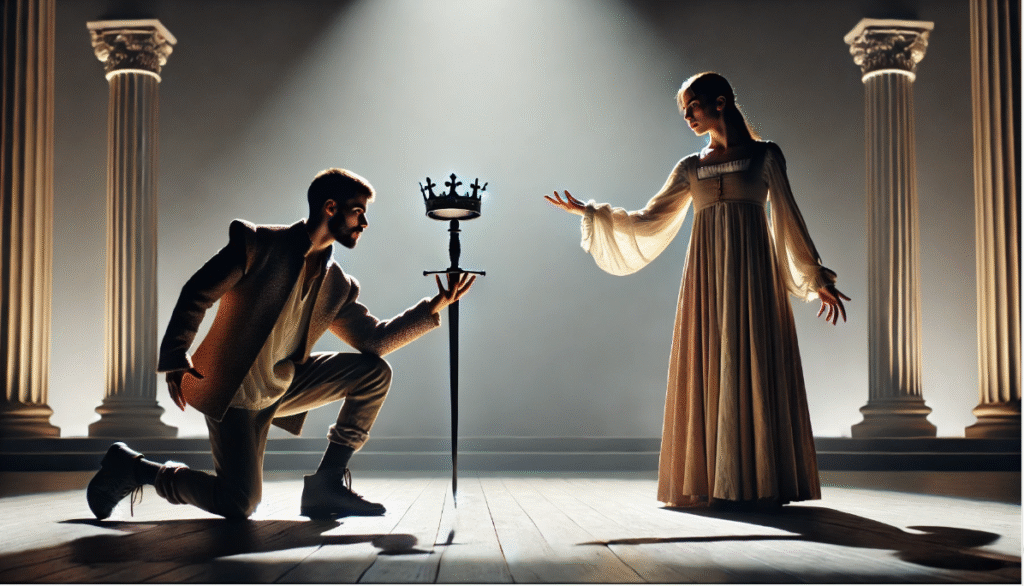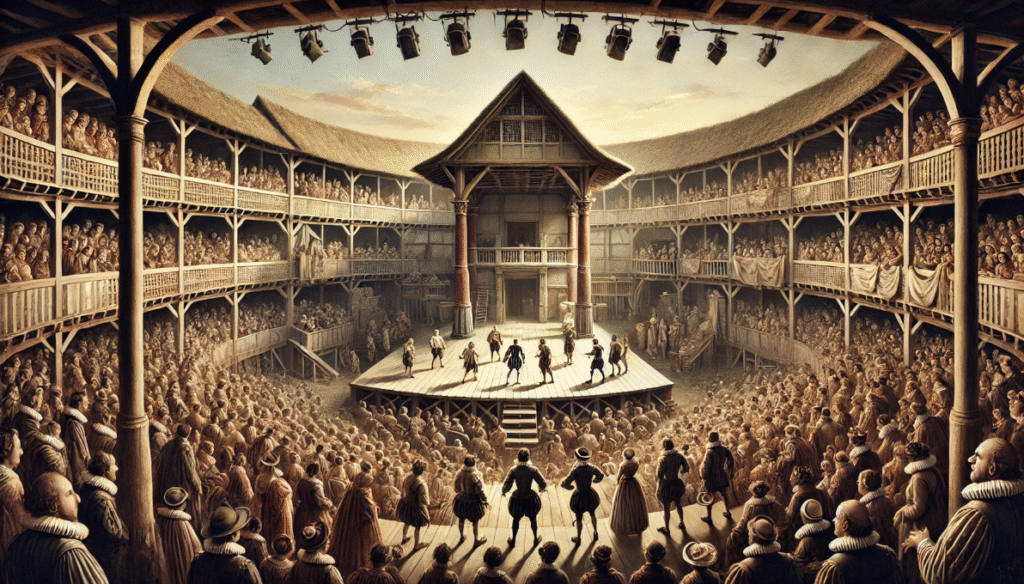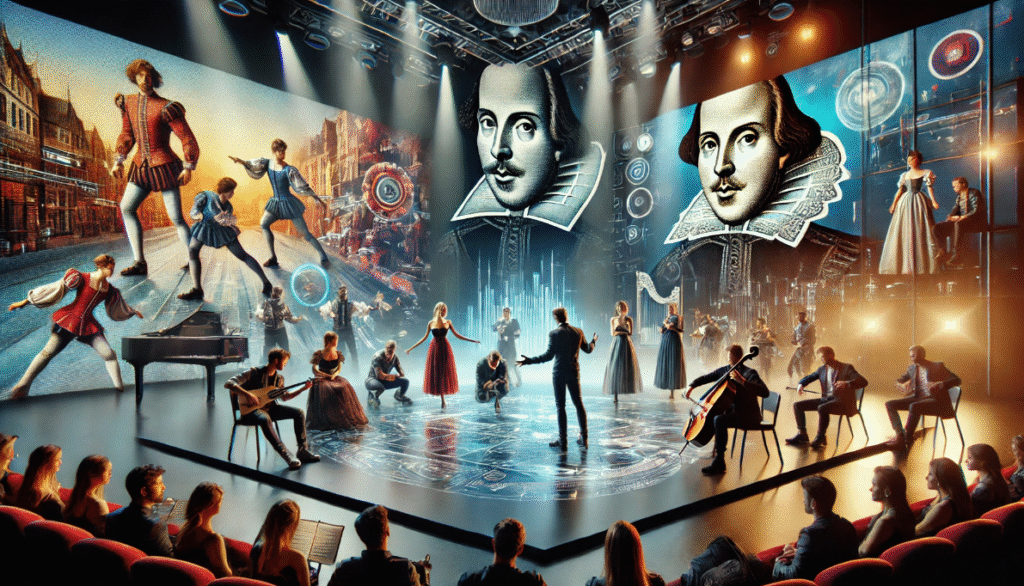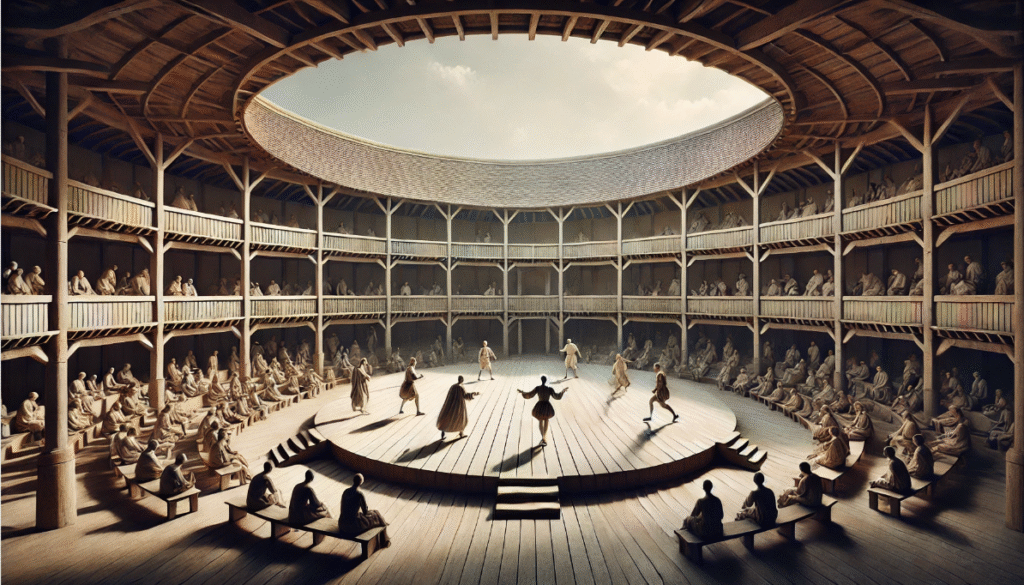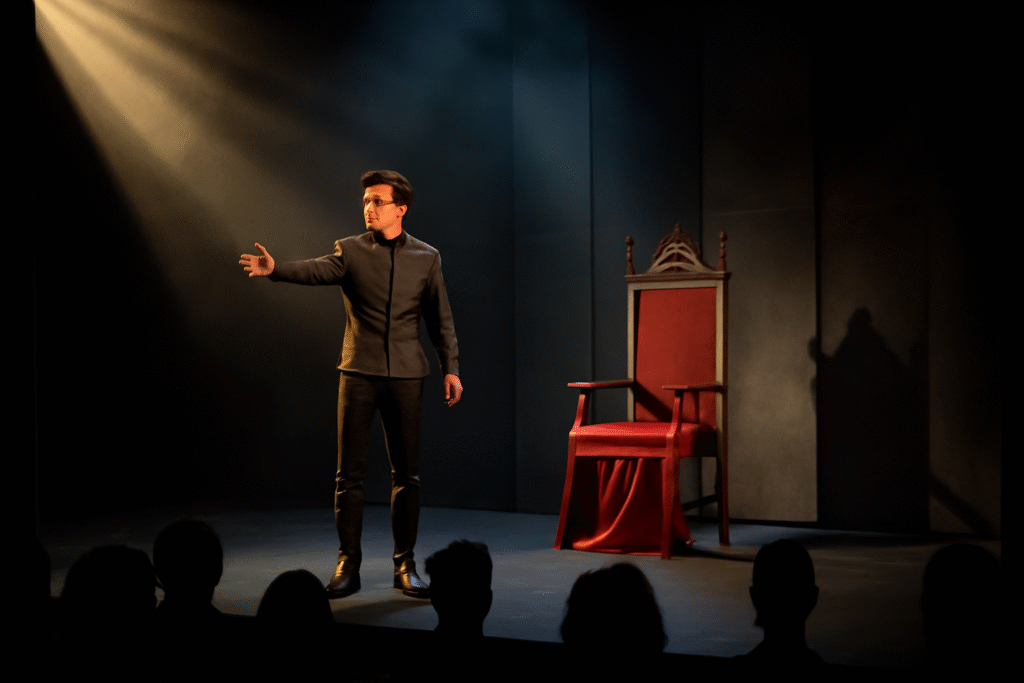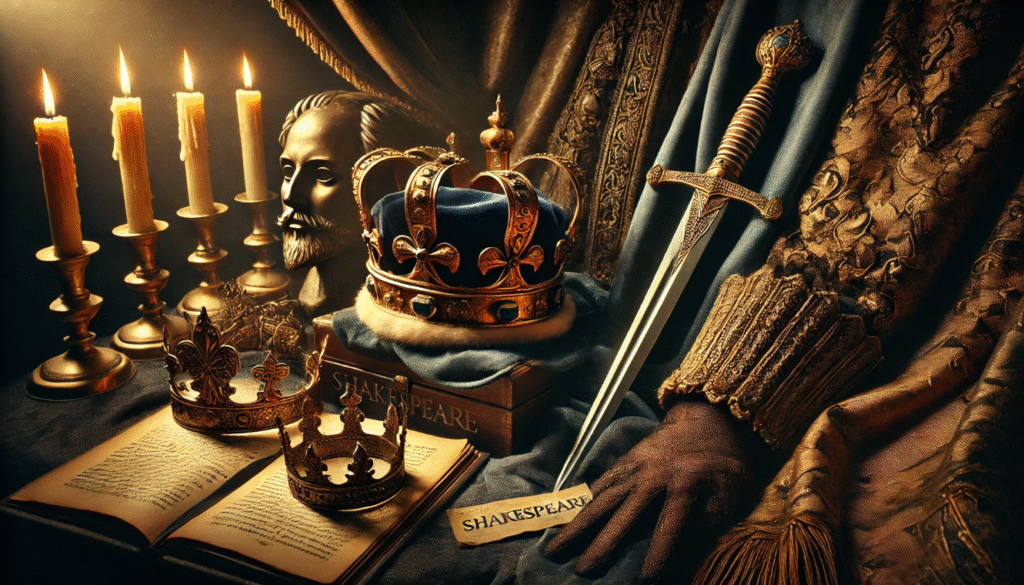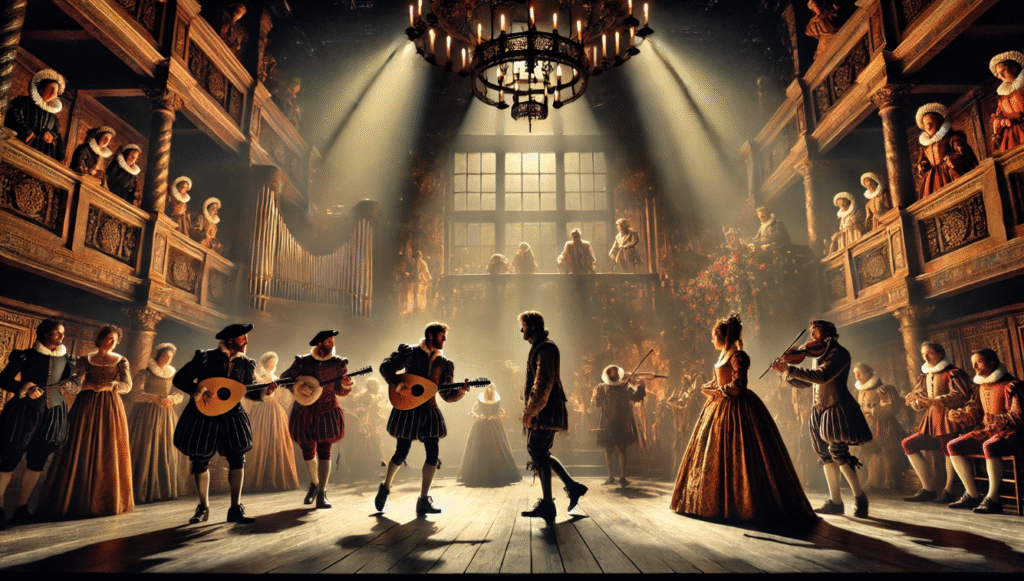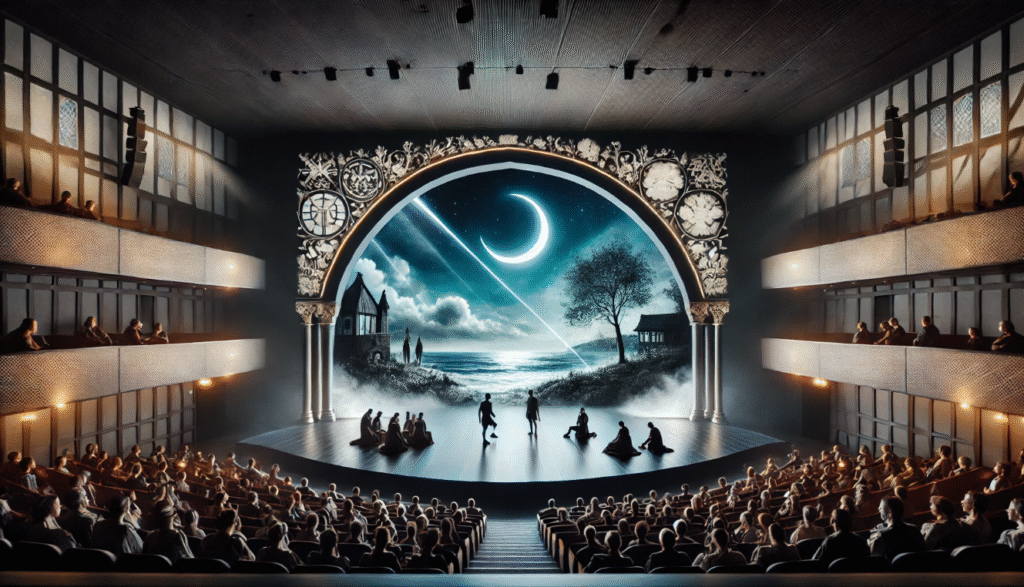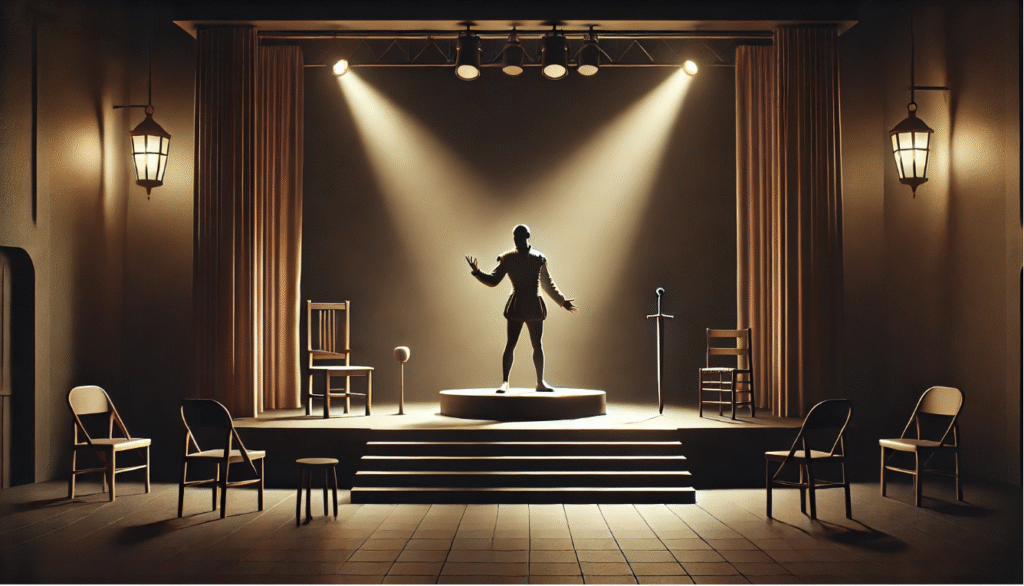Picture a dimly lit Elizabethan stage, where a single skull or a tattered cloak conjures an entire world of betrayal, mortality, or redemption. Shakespeare’s use of symbolism in stage design turned sparse wooden platforms into vivid realms of emotion and meaning, captivating audiences then and now. For theater enthusiasts, directors, and stage designers, understanding these symbolic techniques unlocks the secret to crafting immersive performances that resonate deeply. This article delves into how Shakespeare wielded props, lighting, and spatial arrangements to amplify his narratives, offering historical context, practical insights, and modern applications. Backed by scholarly research and expert insights from seasoned theater practitioners, this guide empowers you to create productions that leave audiences spellbound.
Understanding Symbolism in Shakespearean Stagecraft
What Is Symbolism in Stage Design?
Symbolism in stage design involves using visual elements—props, colors, lighting, or spatial layouts—to convey deeper meanings beyond their literal appearance. In theater, these symbols enhance storytelling by evoking emotions, reinforcing themes, or foreshadowing events. For Shakespeare, a crown wasn’t just headwear; it signified power, legitimacy, or divine right. A storm, like the one in The Tempest, embodied chaos and transformation. Symbols bridge the gap between the physical stage and the audience’s imagination, making abstract concepts tangible. By mastering this, directors and designers can create productions that resonate on intellectual and emotional levels, a technique Shakespeare perfected.
Shakespeare’s Minimalist Stage and Its Symbolic Power
The Elizabethan stage, like the Globe Theatre, was a marvel of simplicity: an open-air platform with minimal props and no elaborate backdrops. This sparsity forced Shakespeare to rely on language and symbolism to evoke settings and moods. A single tree branch could represent a forest, as in As You Like It, while a trapdoor suggested a grave or the underworld in Hamlet. This minimalism amplified the power of symbolic choices, as audiences actively interpreted these cues. Theater historian Andrew Gurr notes, “Shakespeare’s stage demanded imagination, where a prop’s symbolic weight carried the story.” This approach remains a masterclass in resourceful stagecraft for modern designers.
Historical Context of Shakespeare’s Stage Design
The Elizabethan Theater Environment
The Globe Theatre’s thrust stage, surrounded by audiences on three sides, created an intimate yet challenging space for storytelling. With no curtains or advanced lighting, Shakespeare relied on verbal cues and physical symbols to set scenes. A chair became a throne; a lantern suggested midnight. Audiences, accustomed to this convention, co-created the experience by imagining settings based on these symbols. This dynamic made symbolism not just decorative but essential, as it bridged the gap between the stage and the audience’s perception, a technique still vital for immersive theater today.
Influence of Renaissance Symbolism
Shakespeare’s symbolic language drew heavily from Renaissance art and philosophy, where imagery carried layered meanings. Celestial symbols—stars, the sun, or the heavens—reflected divine order or fate, as seen in Romeo and Juliet’s star-crossed lovers. Colors held significance: red for passion or violence, white for purity. Renaissance audiences recognized these cues, rooted in emblem books and religious iconography. For modern designers, understanding this context ensures authentic interpretations, whether staging a traditional Julius Caesar or a futuristic Macbeth. A timeline of Renaissance influences can help visualize this connection:
- 1510s: Emblem books popularize symbolic imagery across Europe.
- 1580s: Elizabethan theater adopts visual symbols from art and literature.
- 1600s: Shakespeare integrates celestial and natural motifs in plays like King Lear.
Key Examples of Symbolism in Shakespeare’s Plays
The Tempest: Nature as a Symbolic Force
In The Tempest, the opening storm isn’t just a plot device but a symbol of chaos and upheaval, setting the stage for themes of redemption and control. The island itself, evoked through sparse props like rocks or driftwood, represents isolation and transformation. Prospero’s staff, a simple prop, embodies his magical authority and control over the narrative. Directors can amplify this symbolism with sound effects (crashing waves) or lighting (stormy blues and grays), ensuring the audience feels the tempest’s emotional weight. This layered approach makes The Tempest a prime example of symbolic stagecraft.
Macbeth: Darkness and Blood as Motifs
Macbeth uses darkness to symbolize guilt, ambition, and moral decay. Night scenes, often staged with dim lighting or black drapery, envelop the audience in the characters’ psychological turmoil. Blood, a recurring motif, appears through red-stained costumes or props, like the imaginary dagger Macbeth sees. Director Emma Rice, in her 2016 Globe production, used red lighting to evoke blood-soaked guilt, intensifying the play’s atmosphere. These choices show how symbols can transform a stage into a visceral experience, a technique modern designers can adapt with LED lighting or minimalist sets.
Hamlet: The Graveyard and Existential Symbolism
The graveyard scene in Hamlet is a masterclass in symbolic stage design. Yorick’s skull, held aloft by Hamlet, is a memento mori, confronting audiences with mortality. The trapdoor, often used as a grave, symbolizes the underworld, amplifying the scene’s existential weight. Spatial arrangements, like placing Ophelia’s grave downstage, draw the audience into Hamlet’s grief. Modern productions might use projections of decaying earth or skeletal imagery to enhance this symbolism, ensuring the scene’s themes resonate across centuries.
Techniques for Implementing Symbolism in Modern Stage Design
Adapting Shakespeare’s Symbols for Contemporary Audiences
Modern directors face the challenge of making Elizabethan symbols relevant today. A minimalist Macbeth might use stark white lighting to symbolize moral ambiguity, while a high-tech Tempest could project ocean waves to evoke the storm. Director Julie Taymor’s 2010 film adaptation of The Tempest used digital effects to create a surreal island, proving symbols can evolve with technology. The key is to retain the emotional core of Shakespeare’s intent while updating the medium. A checklist for directors includes:
- Identify the play’s core themes.
- Choose symbols that resonate with modern audiences.
- Test symbols in rehearsals for clarity and impact.
Balancing Subtlety and Clarity
Overloading a stage with symbols risks confusing audiences, while overly subtle cues may go unnoticed. Shakespeare struck a balance by pairing clear symbols (e.g., Othello’s handkerchief for trust) with layered meanings (betrayal and loss). Modern designers can achieve this by testing symbols with focus groups or using program notes to guide interpretation. For example, a red rose in Romeo and Juliet can symbolize love and sacrifice but should be staged prominently to avoid being overlooked. Subtlety works when it invites active engagement without alienating the audience.
Practical Tools for Symbolic Stagecraft
Lighting, color, and props are powerful tools for symbolic stage design. Blue lighting can evoke melancholy in Hamlet, while a broken mirror in Richard III might symbolize fractured identity. A table of common symbols and their applications can guide designers:
| Symbol | Meaning | Stagecraft Application |
|---|---|---|
| Mirror | Self-reflection | Use in Richard III for distorted self-image |
| Water | Purification/Chaos | Project waves in The Tempest |
| Crown | Power/Legitimacy | Place centrally in King Lear for authority |
Expert stage designer Es Devlin emphasizes, “A single, well-chosen prop can carry more meaning than an elaborate set.” This principle ensures symbols remain impactful without overwhelming the production.
Case Studies: Symbolism in Notable Shakespearean Productions
Royal Shakespeare Company’s A Midsummer Night’s Dream (2016)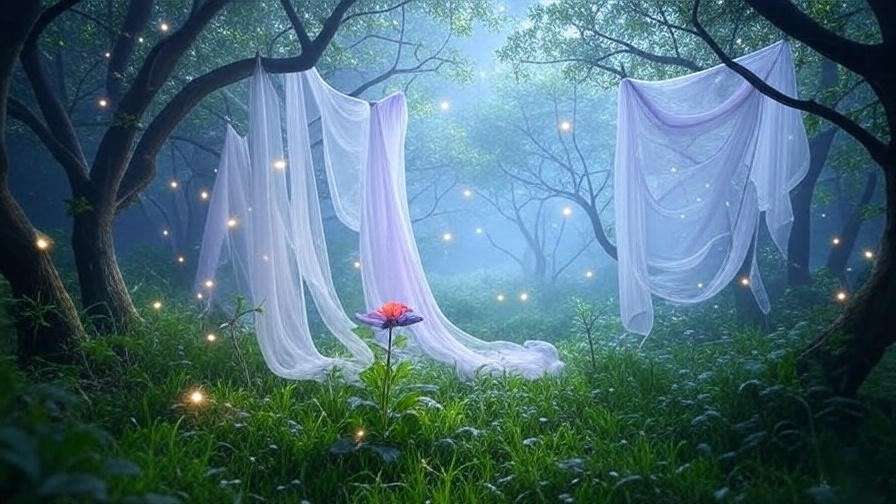
The RSC’s 2016 A Midsummer Night’s Dream used ethereal lighting and gauzy fabrics to create a dreamlike forest, symbolizing enchantment and transformation. Fireflies projected on a translucent backdrop evoked magic, while Puck’s mischievous props (e.g., a flower) underscored love’s capriciousness. Critics praised the production’s immersive quality, proving that symbolic design can captivate modern audiences. Directors can draw inspiration by layering lighting and sound to create otherworldly atmospheres.
Globe Theatre’s King Lear (2020)
The 2020 Globe production of King Lear used a barren stage to mirror Lear’s emotional desolation, with storm effects (thunder soundscapes, flickering lights) symbolizing his inner turmoil. Tattered costumes represented the decay of Lear’s kingdom, while a single crown prop shifted between characters to signify power struggles. This minimalist approach amplified the play’s tragedy, offering a model for directors seeking to evoke raw emotion through symbolic restraint.
Lessons for Aspiring Directors
These case studies highlight the importance of intentionality in symbolic design. Key takeaways include:
- Align symbols with the play’s emotional arc.
- Use technology sparingly to enhance, not dominate, symbolism.
- Engage audiences through universal symbols like nature or light. Aspiring directors should attend live productions or study recordings to observe symbolism in action.
Challenges and Pitfalls in Symbolic Stage Design
Overloading the Stage with Symbols
One of the greatest risks in symbolic stage design is overwhelming the audience with too many visual cues. A production of Julius Caesar that uses multiple symbols for betrayal—say, a dagger, a red scarf, and ominous shadows—can dilute the impact of each. Shakespeare avoided this by focusing on a few potent symbols, like the crown in Macbeth, which carries layers of meaning (ambition, legitimacy, guilt). Modern directors can follow suit by prioritizing one or two symbols per scene, ensuring clarity. Solutions include:
- Conducting audience feedback sessions during rehearsals to gauge symbol comprehension.
- Using lighting to highlight key symbols, drawing focus away from secondary elements.
- Simplifying set design to let symbolic props stand out, as seen in the Globe’s sparse King Lear staging.
Cultural and Historical Misinterpretations
Symbols that resonated with Elizabethan audiences may not translate today. For example, white lilies symbolized purity in Shakespeare’s time, but modern audiences might see them simply as flowers. Similarly, a trapdoor representing the underworld in Hamlet could be misread as a mere stage mechanic. To bridge this gap, directors can contextualize symbols through program notes or pre-show talks, explaining their historical significance. Alternatively, they can adapt symbols to modern equivalents—replacing lilies with white doves for purity, for instance. A practical tip is to research audience demographics and tailor symbols to their cultural context, ensuring relevance without sacrificing authenticity.
Enhancing Audience Engagement Through Symbolism
Creating Emotional Resonance
Shakespeare’s symbols were designed to forge emotional connections with audiences, and this remains a cornerstone of effective stagecraft. In Othello, the handkerchief symbolizes trust, love, and betrayal, its loss amplifying the tragedy. When staged prominently—perhaps dropped center-stage under soft lighting—it draws the audience into Othello’s despair. Modern productions can enhance this by using sound (e.g., a mournful violin) or slow-motion staging to emphasize the handkerchief’s fall. By anchoring symbols to universal emotions like love or loss, designers ensure audiences feel the story’s weight, creating a memorable theatrical experience.
Encouraging Active Interpretation
Subtle symbolism invites audiences to engage intellectually, turning passive viewers into active interpreters. In Romeo and Juliet, the recurring motif of light (e.g., Juliet as the “sun”) encourages audiences to ponder love’s radiance and fragility. Directors can foster this engagement by layering symbols with multiple meanings—say, a ladder in Romeo and Juliet representing both connection and danger. Post-show discussions or online forums can further encourage audiences to unpack these symbols, deepening their connection to the play. A practical tip is to include a question in program notes, like, “What does the ladder symbolize to you?”
Accessibility for Diverse Audiences
To ensure symbols resonate across diverse audiences, directors should lean on universal archetypes. Water, for instance, signifies purification or chaos in plays like The Tempest and Pericles, a meaning that transcends cultural boundaries. Fire can symbolize passion or destruction, as in Antony and Cleopatra. When staging for global audiences, designers might use visual cues like flowing fabrics for water or red lighting for fire to ensure clarity. A sidebar in the program could explain these archetypes, making the production inclusive. For example:
- Water: Purification (baptismal fonts in The Winter’s Tale) or chaos (storms in King Lear).
- Fire: Passion (Cleopatra’s fervor) or ruin (the witches’ cauldron in Macbeth).
This approach ensures symbols are both accessible and impactful.
FAQs About Shakespeare’s Use of Symbolism in Stage Design
How Did Shakespeare Use Props to Convey Symbolism?
Shakespeare’s props were often simple but laden with meaning. In Othello, the handkerchief represents love and fidelity, its loss signaling betrayal. In Macbeth, the dagger vision symbolizes guilt and ambition. By staging these props prominently—e.g., spotlighting the handkerchief—directors amplify their impact. Historical records from the Globe suggest props were reused across plays, making their symbolic consistency crucial.
Can Modern Directors Replicate Shakespeare’s Symbolic Techniques?
Yes, but adaptation is key. Modern productions might use projections or digital effects to evoke Shakespeare’s symbols, like a starry backdrop for Romeo and Juliet’s celestial imagery. The 2016 RSC Midsummer Night’s Dream used LED lights to create a magical forest, proving symbols can evolve while retaining their emotional core. Directors should test modern equivalents in workshops to ensure clarity.
What Are Common Mistakes in Symbolic Stage Design?
Overuse of symbols can confuse audiences, as can ignoring historical context. A Tempest with too many oceanic props risks diluting the storm’s symbolic chaos. Misinterpreting symbols—like using a modern prop irrelevant to Elizabethan themes—can also alienate viewers. Solutions include audience testing and consulting historical texts, like Stephen Orgel’s The Illusion of Power.
How Can Symbolism Enhance Audience Engagement?
Symbols deepen emotional and intellectual engagement. The skull in Hamlet prompts reflection on mortality, while the storm in King Lear mirrors emotional turmoil. By staging symbols clearly (e.g., a spotlight on Yorick’s skull), directors ensure audiences connect with the play’s themes, fostering discussion and repeat attendance.
Shakespeare’s use of symbolism in stage design transformed sparse Elizabethan stages into vibrant worlds of meaning, a testament to his genius in stagecraft. From the tempest’s chaotic waves to Macbeth’s blood-soaked guilt, these symbols create immersive experiences that resonate across centuries. By understanding historical context, applying practical techniques, and avoiding common pitfalls, modern directors can harness this power to craft productions that captivate and inspire. Experiment with symbolic elements in your next production, or attend a Shakespeare play to witness these techniques in action. Share your favorite symbolic moments in the comments or on X with #ShakespeareStagecraft—what symbols have moved you?


